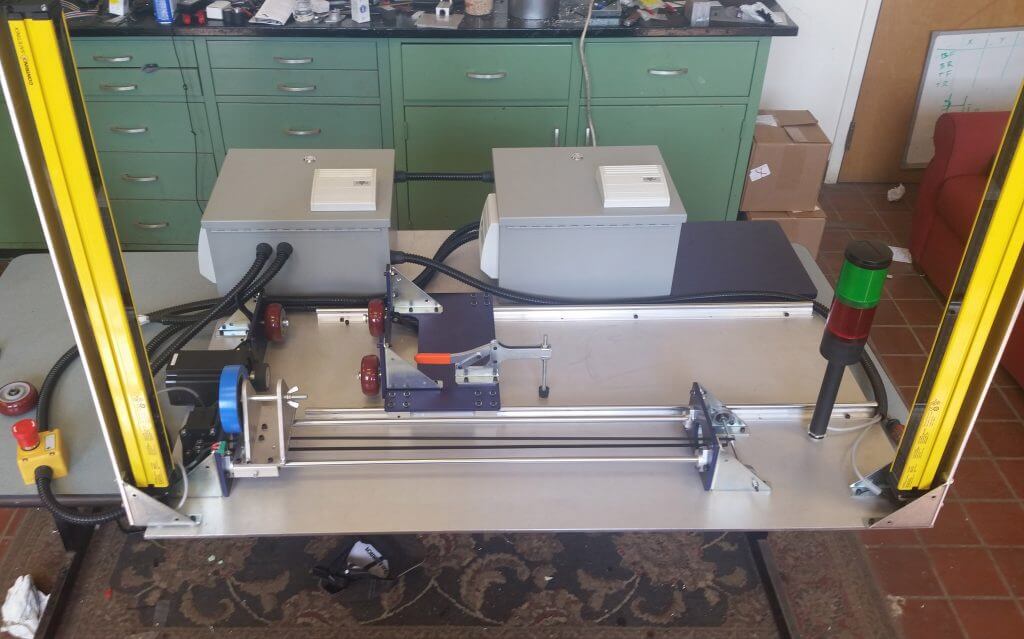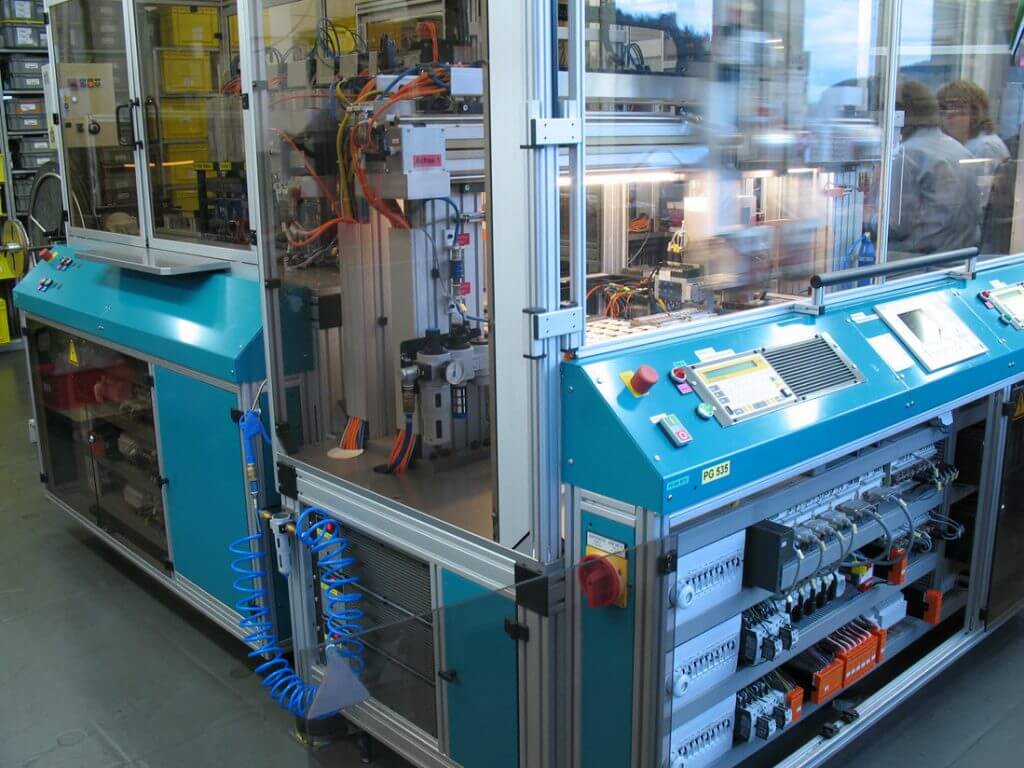Machine designers must consider many factors when deciding on safety system architectures for factory automation.
Larry Reynolds, product engineer for safety components at AutomationDirect, wrote an article for the September-October 2019 issue of ISA’s InTech titled Integrated or Separate Safety Systems. Here’s a summary, click on the link above for the full text.
Factory equipment automation can be deemed a critical application, yet it is clear that properly designing the safety aspects are even more crucial. This has typically meant applying safety components to the fundamental automation system. The purpose of a safety system is to bring a machine to a safe state as quickly as possible if a safety sensor is triggered, an e-stop pushbutton is activated, or any other safety-related anomaly is detected.
Risk Assessment Comes First
The first step is for qualified personnel to perform a risk assessment following methods outlined in various industry standards. Potential unsafe conditions, such as an out-of-place guard, a worker-present sensor, or an activated emergency stop button must be identified, along with ways for bringing the equipment to a safe state.
Driving to a Safe State
Most often, a safe state is achieved by removing sources of energy such as electricity, compressed air, or hydraulics. Sometimes mechanisms must be engaged to slow or lock the equipment, or power may need to be maintained to hold the equipment in the safe state.
Paths to Proper Safety
There are three main technical paths to sense unsafe conditions and drive equipment to a safe state:
- Basic safety relays
- Individual safety controllers or safety-rated smart relays
- Fully integrated equipment/safety control systems such as a safety programmable logic controller (PLC)
Designers must balance hardware costs, installation costs, design effort, programming/configuration effort, and more.
Basic Safety Relays
Hardwired safety relays are the original method of providing machine safety, and these components can be arranged to de-energize many types of systems. They can integrate with simple devices like emergency stop buttons, or more advanced sensors like light curtains.

Modern safety relays are a tried-and-true approach using standardized components. Safety relays are easy for design and operations personnel to work with, but are less suitable for complex designs, require significant field wiring, and are harder to modify.
Individual Safety Controllers
Robust digital industrial automation electronics have enabled a progression from basic safety relays to individual safety controllers.

They can be all-in-one devices with inputs and outputs (I/O), or they may be modular with connectable components for the controller, inputs, outputs, and communications. This expandability enables safety controllers to easily connect with many more field devices.
Individual safety controllers are software-configurable. Users can assign and even overlap safety zones, or they can modify the configuration without wiring changes.

Safety controllers, such as these MOSAIC examples, are far more advanced than basic relays, with additional protective features, configurability, expandable I/O options, and even communication capabilities.
Digital communication options enable these controllers to be conveniently monitored by non-safety rated systems. For larger I/O counts, a safety controller solution can become comparatively less expensive than using basic safety relays.

Full Integration of Equipment Control with Safety Control
There are also specialized safety-rated PLCs, combining the equipment control abilities of standard PLCs with appropriate safety ratings. They are very flexible, and because equipment control and safety functionality are both handled within a single controller, they are closely integrated within a consistent programming environment.
The complexity of fully integrated safety PLCs comes at a price, which is higher for the hardware platform itself, and also demands greater programming skill. Their more specialized nature makes these controllers more challenging for end users to support as compared with standard PLCs and simpler safety systems. Typical applications for this type of solution are found when a large proportion of the I/O points are safety related.
Making a Safe Choice
Automation safety concepts can be applied to equipment protection, but personnel safety is always the highest concern and must be accomplished in accordance with industry standards.
For simple equipment with just a few safety I/O points, basic safety relays are economical and easy to use. For higher I/O counts or where PLC integration is needed, safety controllers are an excellent fit. Fully integrated safety-rated PLCs can help OEMs to streamline their designs, but are more complex and will often require personnel training.

